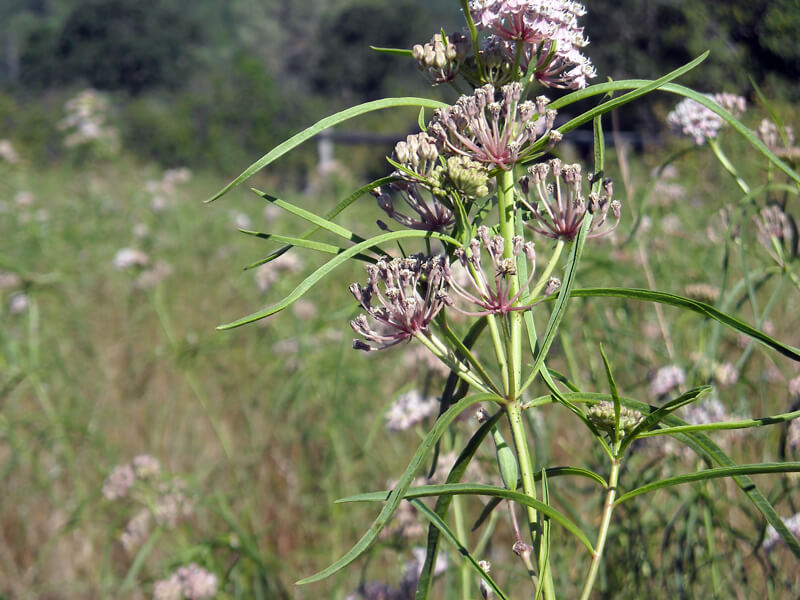In the wild Narrow-leaf Milkweed can be seen growing in meadows, sometimes in large, spread out stands. In the garden it is equally effective in drifts or scattered stands, blending and mingling with other drought-tolerant perennials. The flowers are not large, but there are many flowering stalks, and the plant is somewhat wispy; so it looks good combined with larger leaved sturdier plants and native bunchgrasses. It needs full sun, and little to no water. The plant is not long-lived, but reseeds itself readily; in my Novato garden it often dies out where I’ve planted it, but persists vigorously where it seeded itself! It is drought tolerant and deer proof.
Milkweeds are wonderful habitat plants that provide resources for a host of creatures. Summer blooms attract an array of pollinators, and the plant can host both Milkweed bugs and beetles; as well as the larvae of the Monarch butterfly. All these living creatures on a Milkweed plant also attract a number of interesting predatory insects, including the large and spectacularly colored Tarantula Hawks.
An often, unwanted guest on Milkweeds is the imported orange Oleander aphid. This aphid is host specific, and will not show up on other garden plants; but try to reduce populations on the Milkweeds right away. This can be done by simply washing them off the plant with a strong spray of water. Large aphid populations weaken the plant and lessen the resources available to the Monarch butterfly larvae.


